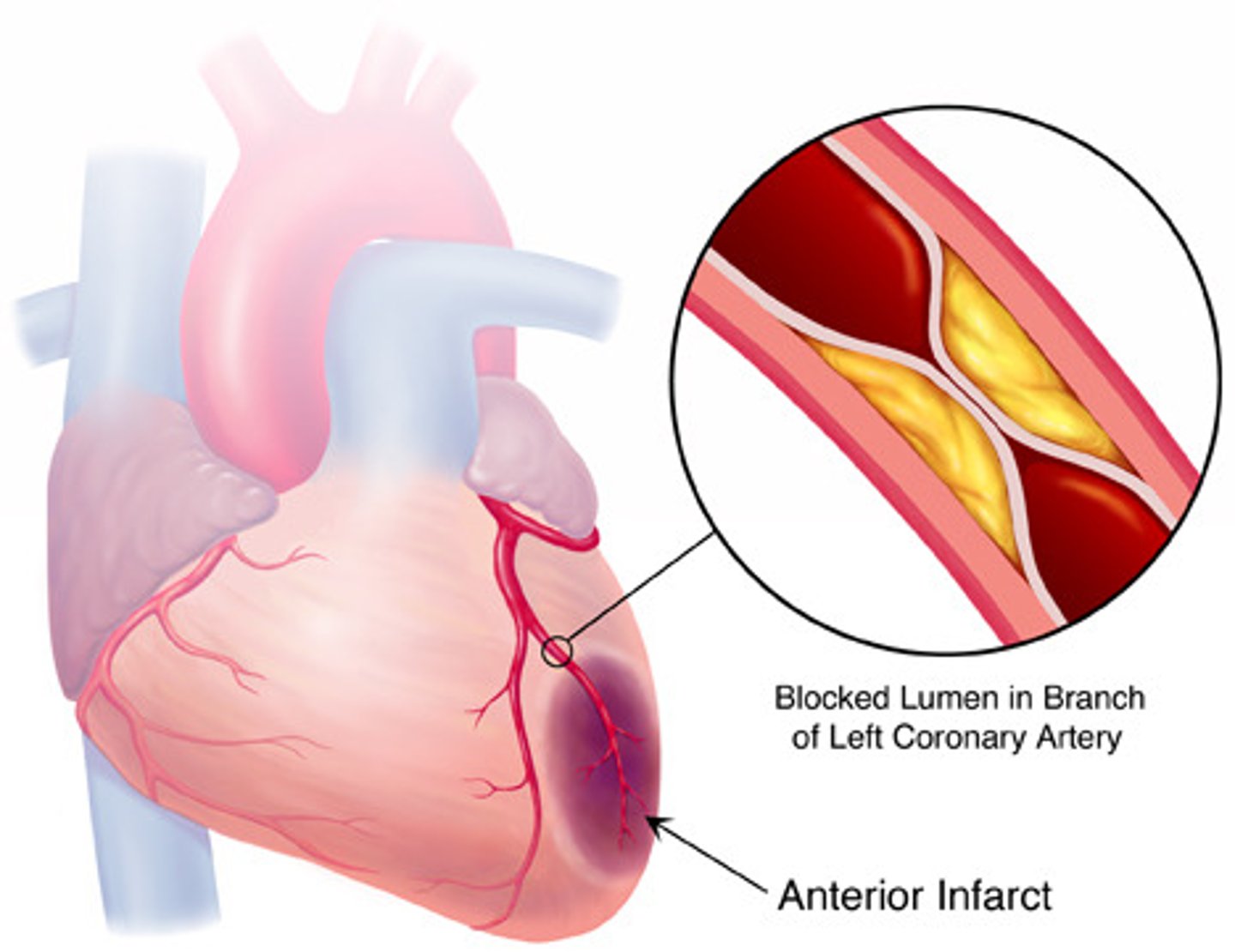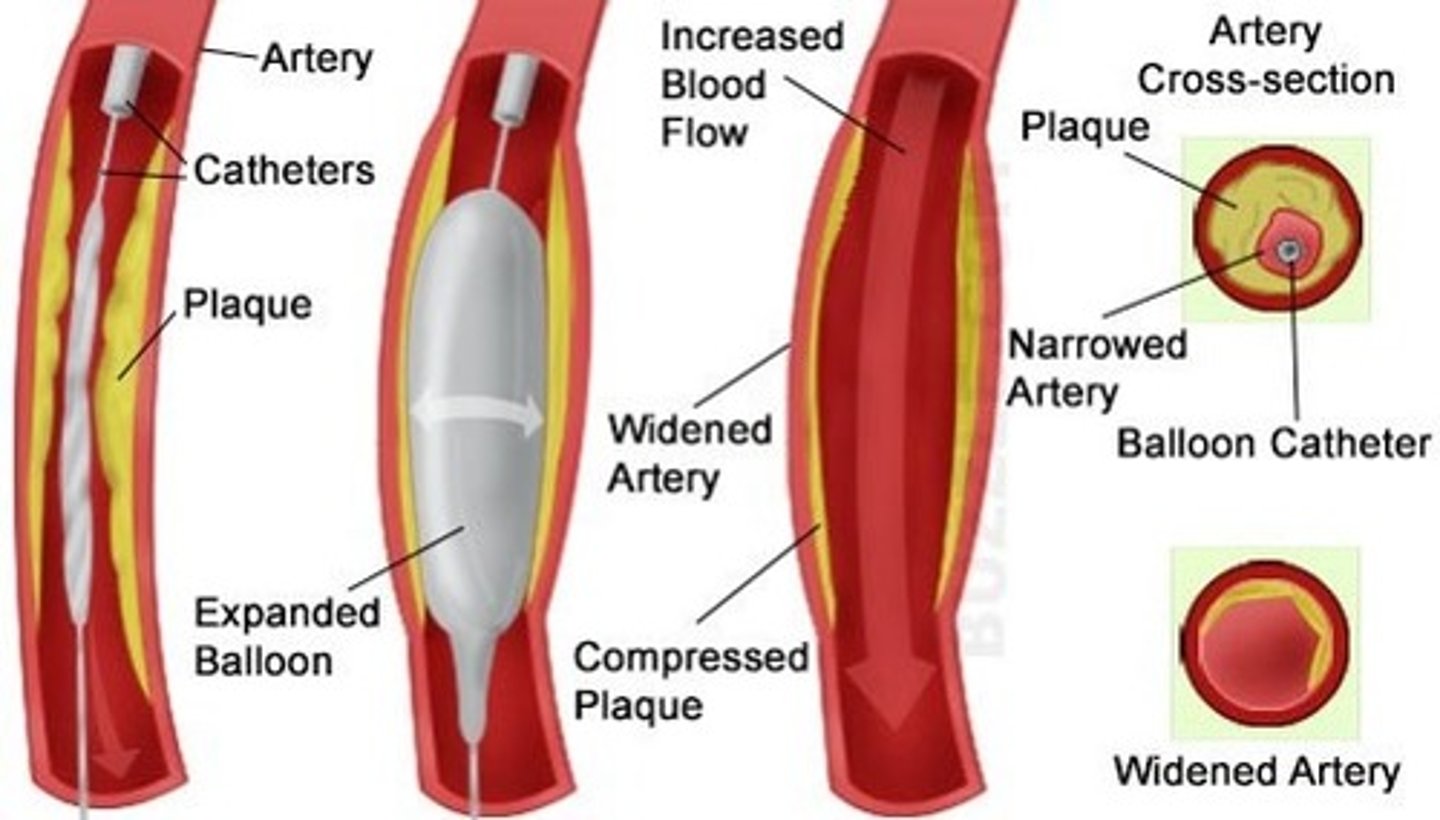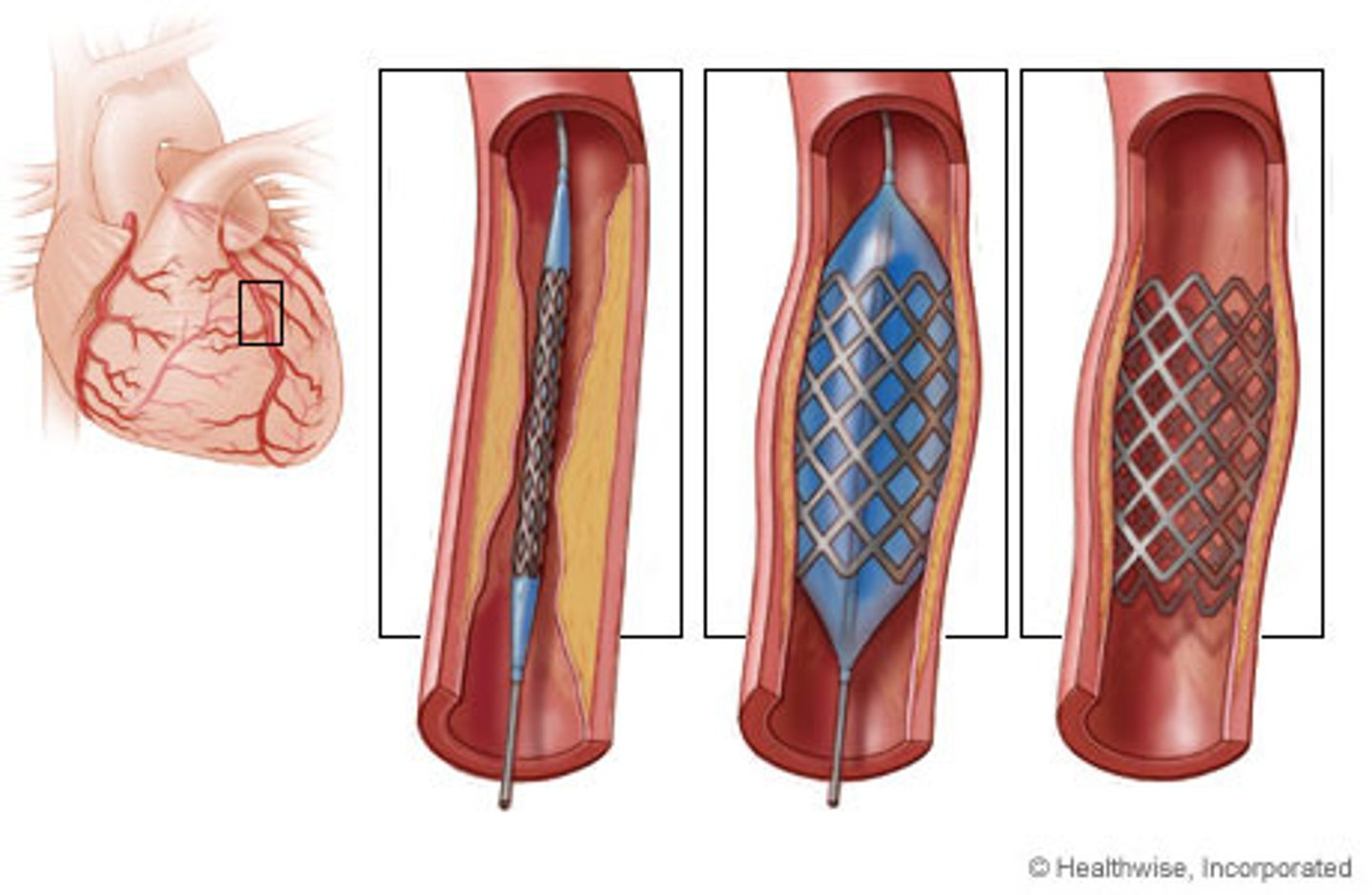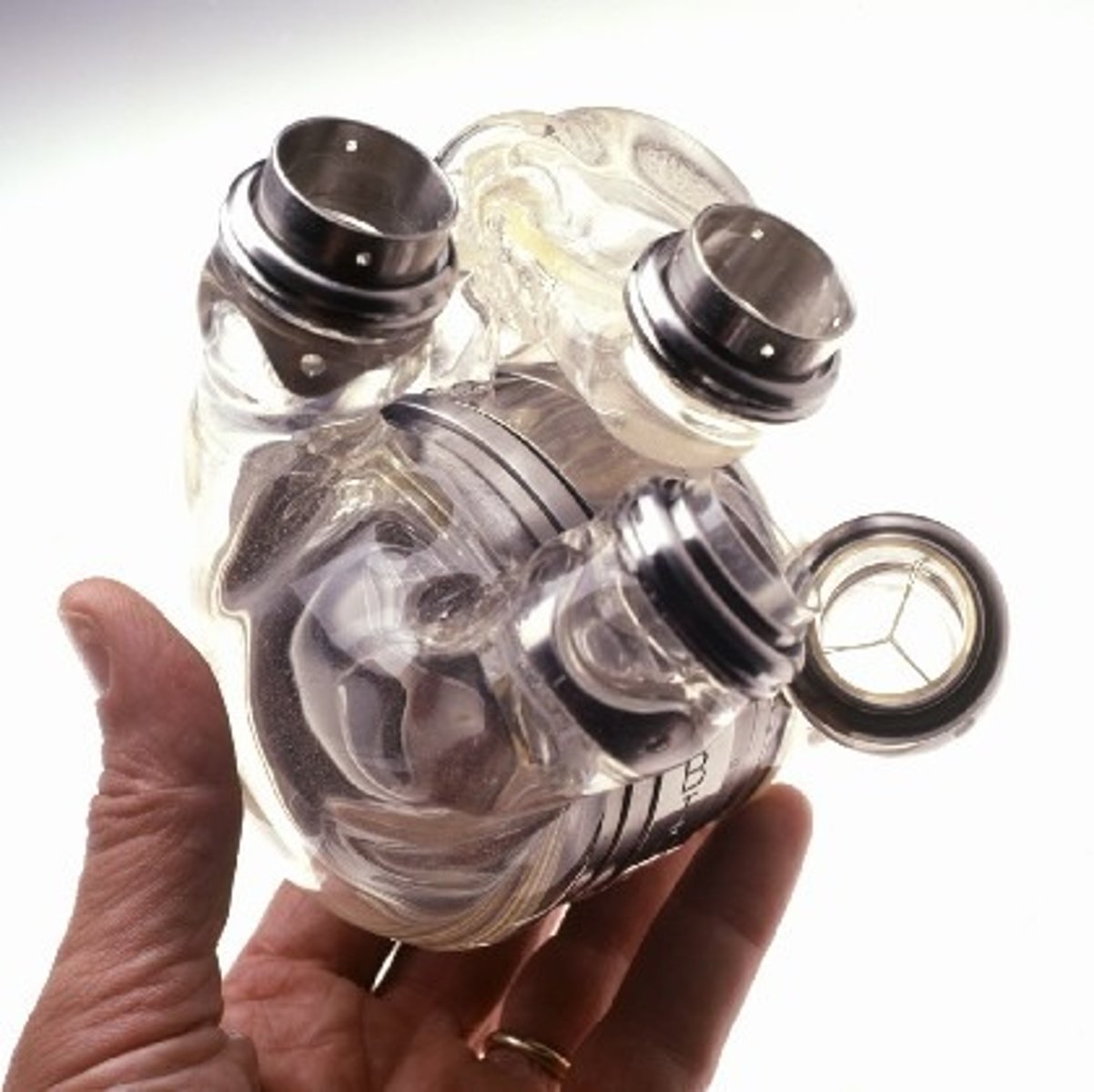coronary heart disease: a non-communicable disease
1/15
There's no tags or description
Looks like no tags are added yet.
Name | Mastery | Learn | Test | Matching | Spaced |
|---|
No study sessions yet.
16 Terms
What builds up inside the coronary arteries in coronary heart disease?
Fatty material.

What is the cause of fatty material build up inside coronary arteries?
The narrowing of the arteries.

Why is the narrowing of coronary arteries bad?
It reduces the flow of blood resulting in a lack of oxygen for the heart muscle.

Name a mechanical device that treats coronary heart disease.
Stents.

Name a drug that treats coronary heart disease.
Statins.

What do stents do?
Keep arteries open.
What do statins do?
Reduce blood cholesterol levels which slows down the rate of fatty material deposit.
What happens in the case of heart failure?
A donor heart can be transplanted.
When are artificial hearts used?
To keep patients alive whilst waiting for a heart transplant, or to allow the heart to rest as an aid to recovery.

Give advantages of using drugs to treat heart diseases.
Often cheap to buy, and do not require surgery.
Give disadvantages of using drugs to treat heart diseases.
May have side effects, and the patient has to remember to take them.
what is the purpose of the coronary arteries?
provide oxygen to the muscle cells of the heart.
consequences of faulty valves?
less blood being pumped to the body, causing symptoms like tiredness and breathlessness because of reduced oxygen.
advantages and disadvantages of stents?
Advantages:
- last a long time
Disadvantages:
- risk of damage to blood vessel during surgery.
advantages and disadvantages of statins?
advantages:
- reduces the levels of "bad" cholesterol (LDL) in the blood which reduces the risk of fatty deposits building up- this reduces the risk of CHD
disadvantages:
- need to be takes regularly and long-term, otherwise they are not as effective.
evaluate the advantages and disadvantages of treating cardiovascular diseases with drugs, mechanical devices or transplants.
Drugs -----
Advantages:
- Reduce the risk of heart attack and stroke by lowering cholesterol levels.
- Can be cost-effective and widely available.
Disadvantages:
- Require long-term or lifelong commitment.
- Can have side effects like headaches, joint pain, or kidney problems.
- Are not suitable for everyone, such as those with liver disease .
- Do not take effect immediately.
Mechanical devices -----
Advantages:
- Artificial devices are not rejected by the immune system like biological transplants.
- Mechanical heart valves have a higher survival rate and don't need replacing as often as some biological valves.
Disadvantages:
- Require a power supply.
- Can wear out and need to be replaced.
- Mechanical valves carry a higher risk of blood clots, requiring lifelong anti-clotting medication, which can cause excessive bleeding.
- Surgery to implant them is invasive and involves long hospital stays.
Transplants: -----
Advantages:
- Can be a life-saving procedure.
- Can significantly improve the patient's quality of life.
Disadvantages:
- The body's immune system may reject the new organ.
- Requires a long recovery period.
- Involves a complex and expensive operation and aftercare.
- The patient must take anti-rejection drugs for life, which have their own side effects.